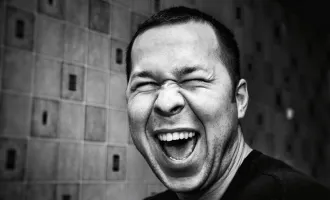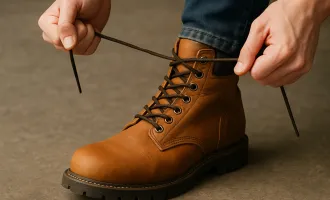
This Date in UCSF History: Finally... A New President
Originally published in Synapse on January 11, 2001. “Tonight, for the sake of our unity as a people and the strength of our democracy, I offer my concession,” a relaxed Vice-President Gore stated firmly in a speech from his Washington office on Wednesday, December 13.
With the election that took place some five weeks before, Americans have been upset or indifferent; yet most have been fascinated and drawn toward daily news reports while the two candidates went through a roller coaster ride of battles in the courtrooms and state capitals to be the next President of the United States.
Phrases like “hanging chad,” “dimpled chad” and “pregnant chad” entered our everyday conversations.
Al Gore’s presidential concession brings an absolute end to the most eventful month in American electoral history, leaving Texas Governor George W. Bush as our President-elect.
Synapse offers this recap of this historic and wild ride, beginning on Election Day.
November 7
Election Day. Shortly before 8 p.m. EST, while the race remains extremely close across the nation, major television networks announce that Gore has beaten Bush in the key state of Florida — but as the night goes on and results come in, networks are forced to retract the estimate.
It becomes clear that the victor in Florida will win the electoral votes necessary to claim the presidency.
November 8
About 2:15 a.m., major networks call Florida and find that Gore will probably lose Florida by about 50,000 votes.
The Vice-President calls the Texas governor and concedes. But 45 minutes later, he calls back to retract his concession after being informed that Bush’s lead in Florida has shrunk dramatically.
The nation’s focus immediately turns to Florida, and soon questions are raised about voting in some areas.
In Palm Beach County, an unexpectedly large vote for the third-party candidates leads to questions about the “butterfly ballot.”
Large numbers of disqualified ballots, or ballots where no vote is registered for president, are found in other counties.
Bush and Gore’s campaigns respond by sending teams of lawyers to Florida. The close race triggers an automatic recount of ballots under state law.
November 9
Former Secretary of State Warren Christopher, who led the Gore’s team, requests a hand recount of ballots in four Florida counties — Palm Beach, Dade, Broward and Volusia — and a circuit judge orders Palm Beach County not to certify its results.
November 10
The Florida machine recount is completed. Unofficial results give Bush a lead of only 327 votes out of nearly six million.
November 12
While Volusia County begins its own hand count, Palm Beach County officials vote to conduct a full hand recount. Former Secretary of State James Baker, who led Bush’s legal team goes to federal court seeking to block manual recounts.
As the days go by, several lawsuits from a number of parties spring up in state and federal courts, seeking to either block or allow the counts and certifications, or raising questions about the legal validity of absentee ballots in some counties.
November 13
While Gore’s team initiates a legal challenge to Florida Secretary of State Katherine Harris’ decision to not extend a deadline of 5 p.m. EST on November 14 for receiving all state election results except for overseas absentee ballots.
A federal judge turns down the Bush team’s attempt to stop manual recounts.
November 14
Harris delays certification of the state’s votes until 2 p.m. EST November 15 so three heavily Democratic counties can explain why they should conduct hand recounts of their ballots.
Meanwhile, Palm Beach County votes to temporarily stop its hand recount and Dade County begins a hand recount of about 1 percent of its votes in questioned precincts.
November 15
The Associated Press estimates Bush’s lead at only 286 votes while Broward County decides to begin a hand recount.
Harris says she will not accept further hand recounts and asks the state Supreme Court to order the suspension of manual recounts.
November 16
Bush’s attorneys submit written arguments to the U.S. federal appeals court in Atlanta to end the recounts as Democrats filed papers with the federal court to oppose the Republican bid.
The Florida Supreme Court rules Palm Beach County can proceed with a manual recount of ballots.
Gore’s legal team files an emergency motion in Leon County state court challenging the certification of the Florida’s results.
November 17
The Florida Supreme Court blocks Harris from any vote certification until it can rule on the Democrats’ motion to allow hand recounts to be counted.
The midnight deadline strikes for counties to receive overseas absentee ballots.
Miami Dade County reverses an earlier decision and votes to conduct a full manual recount.
The 11th Circuit Court of Appeals denies GOP request to stop manual recounts on constitutional grounds.
November 18
After absentee ballots are counted, uncertified results show Bush leads Gore by 930 votes.
November 20
While Circuit Judge Jorge Labarga says he does not have the authority under the U.S. Constitution to order a new presidential election in Palm Beach County, Florida Supreme Court holds a hearing on whether Harris should consider hand-re-counted ballots before she certifies the results.
November 21
The Florida Supreme Court gives counties five days to complete the hand count.
November 22
Republican Vice Presidential candidate Dick Cheney suffers his fourth heart attack and undergoes surgery to open a constricted artery.
November 23
Miami-Dade County officials stop the count because they were not given enough time to complete the recount before the deadline given by the Florida Supreme Court.
Democrats blame this decision on a raucous Republican demonstration, accusing the GOP of intimidating the canvassing board into quitting — a charge Republicans deny.
November 24
The U.S. Supreme Court agrees to hear Bush’s appeal of the Florida high court ruling to allow hand recounts to proceed.
November 26
Harris certifies the results of the Florida vote after the state Supreme Court deadline expires, giving Bush a 537-vote lead over Gore, not including results from Palm Beach County, which completed its manual recount about two hours after the deadline.
Bush says Cheney will lead his transition team to move forward with planning an administration.
November 27
As the General Services Administration announces that it will withhold the funding and office space for planning a transition until the election dispute is resolved, Gore’s legal team moves to a Tallahassee court contesting the Florida results, which excluded thousands of votes that were never tallied.
November 28
After hearing Gore’s election contest, Judge N. Sanders Sauls, refuses Gore’s request for a fast resolution and sets a December 2 hearing on the case.
November 29
Judge Sauls orders more than 1 million ballots from Palm Beach and Miami-Dade counties shipped to Tallahassee for possible hand counts in Gore’s contest.
A committee of Florida lawmakers meets to consider whether to convene a special session of the state Legislature to appoint electors on its own.
November 30
Florida lawmakers vote along party lines to recommend a special session to name electors if the election contest is not resolved by December 12, six days before the Electoral College meets.
The Republican-led legislature is expected to name electors pledged to Bush.
December 1
The U.S. Supreme Court hears oral arguments over whether the Florida Supreme Court overstepped its authority by ordering Harris to include the manual recounts in certified state results.
Meanwhile, the Florida Supreme Court upholds Sauls’ ruling putting off a hand recount in Gore’s contest.
December 2
Sauls opens two days of proceedings on Gore’s challenge to the Florida results.
The vice president asks for a count of about 14,000 “undervotes” from Palm Beach and Miami-Dade counties.
December 3
Bush meets with Republican congressional leaders at his Texas ranch to discuss the transition while Gore contests in court in Tallahassee.
December 4
Sauls finds the vice president failed to show that hand recounts would have affected the results and rejects Gore’s contest to the Florida results.
Gore appeals to the Florida Supreme Court.
Meanwhile, the U.S. Supreme Court asks the Florida Supreme Court to explain its reasoning in extending the hand recounts, returning the case to Tallahassee and putting off any action in Bush’s appeal objecting to the recounts.
December 6
While Florida House Speaker Tom Feeney and Senate President John McKay, both Republicans, announce the state Legislature will convene to select electors, two lawsuits asking judges to toss out some 25,000 absentee ballots in predominantly Republican Seminole and Martin counties go to trial in Tallahassee.
December 7
Gore’s legal team argues before the Florida Supreme Court that Judge Sauls was wrong to uphold the certification of Florida’s election results while Bush’s attorneys urge the seven-member panel to let Sauls’ decision stand.
December 8
Divided 4-3, the Florida Supreme Court orders manual recounts in all counties with significant numbers of presidential undervotes.
Bush appeals the decision to the U.S. Supreme Court and seeks the stop of the hand recounts.
The Florida Legislature meets to begin the process of choosing electors on its own.
Circuit judges in Tallahassee rule against Democratic challenges to absentee ballots in Martin and Seminole counties.
December 9
The U.S. Supreme Court, in a 5-4 ruling, halts the manual recounts and sets a hearing on the matter two days later.
December 11
Bush’s lawyers argue before the U.S. Supreme Court in that the Florida high court again overstepped its bounds by ordering a manual recount of undervotes in Gore’s election contest.
Gore’s lawyers argue that the U.S. Supreme Court has no reason to intervene in the state court contest.
December 13
Gore offers his presidential concession and Bush gives his victory speech.
December 18
Electors convene in their state capitals to cast ballots for Bush as president and Cheney as vice president.
January 3
The 107th Congress convenes and will soon hold confirmation hearings for Bush’s appointees.
January 20
Bush assumes the Presidency.
In little more than one week, Republican Texas Governor George W. Bush will be sworn in to serve as the U.S.’s highest Chief Executive Officer — your President for the next four years.
However, his seesaw court battles with Democrat Vice President Gore over recounts in Florida, which lasted 35 days past Election Day, will be boldly printed in history books for centuries to come.
Bush’s presidential win and its validity were and are still questionable by the majority of American population, especially those whose votes never got counted.
Gore, a two-term vice president, is the first presidential contender since 1888 to win the national popular vote but fall short in the Electoral College.
He bested Republican rival Bush by slightly more than 330,000 popular votes, but with a Supreme Court decision that halted his push for a manual recount of the votes in Florida, Gore fell three votes short of a majority in the Electoral College.
This election has divided the country a great deal, and it will take some time for healing before politicians can start talking about legislating.
With Republicans hold a bare majority in the House of Representatives, the Senate will be split 50-50 and even the Supreme Court was unable to speak unanimously in its final ruling.
Did George W. Bush win after all?


